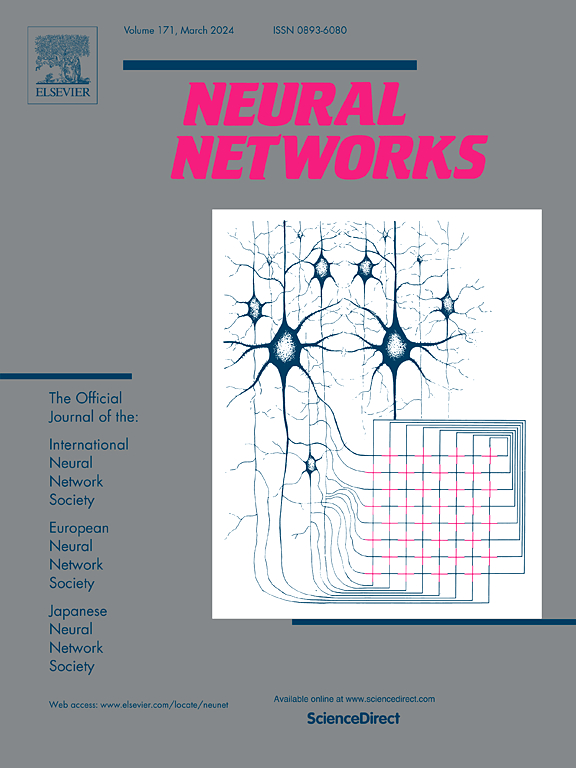有杆抽油系统故障诊断的结构信息保持域自适应网络
IF 6
1区 计算机科学
Q1 COMPUTER SCIENCE, ARTIFICIAL INTELLIGENCE
引用次数: 0
摘要
故障诊断对有杆抽油系统的可靠性和安全性具有重要意义。随着数字化油田的发展,数据驱动的深度学习SRP故障诊断已成为油田系统的发展趋势。然而,由于工作条件、时间段和区域的不同,从某些SRP数据训练的故障诊断模型没有考虑不同SRP系统的统计差异,导致泛化不足。为了同时考虑深度模型的故障诊断和泛化性能,本文提出了一种用于SRP故障诊断的结构信息保持域自适应网络(SIP-DAN)。与通常的域自适应方法不同,SIP-DAN根据源域的故障类别将源域数据划分为不同的子域,然后通过对源域和目标域的子域对齐来实现保持结构信息的域自适应。针对目标域缺乏故障类别信息的问题,设计了一种分类器投票辅助对齐(CVAA)机制。采用模糊聚类算法对目标域数据进行聚类。然后,利用源域训练好的故障诊断分类器对每个聚类中的样本进行分类,并利用多数投票原则对目标域的每个聚类分配伪标签。利用这些伪标签,通过优化局部最大平均差异(LMMD)损失进行源子域和目标子域对齐,实现细粒度域自适应。实验结果表明,该方法在SRP系统故障诊断方面优于现有方法。本文章由计算机程序翻译,如有差异,请以英文原文为准。
Structure information preserving domain adaptation network for fault diagnosis of Sucker Rod Pumping systems
Fault diagnosis is of great importance to the reliability and security of Sucker Rod Pumping (SRP) oil production system. With the development of digital oilfield, data-driven deep learning SRP fault diagnosis has become the development trend of oilfield system. However, due to the different working conditions, time periods, and areas, the fault diagnosis models trained from certain SRP data do not consider the statistical discrepancy of different SRP systems, resulting in insufficient generalization. To consider the fault diagnosis and generalization performances of deep models at the same time, this paper proposes a Structure Information Preserving Domain Adaptation Network (SIP-DAN) for SRP fault diagnosis. Different from the usual domain adaptation methods, SIP-DAN divides the source domain data into different subdomains according to the fault categories of the source domain, and then realizes structure information preserving domain adaptation through subdomains alignment of the source domain and the target domain. Due to the lack of fault category information in the target domain, we designed a Classifier Voting Assisted Alignment (CVAA) mechanism. The target domain data are divided into clusters using fuzzy clustering algorithm. Then, fault diagnosis classifier trained in source domain is employed to classify the samples in each cluster, and the majority voting principle is used to assign pseudo-labels to each cluster in the target domain. With these pseudo-labels, source and target subdomains alignment is carried out by optimizing the Local Maximum Mean Discrepancy (LMMD) loss to achieve fine-grained domain adaptation. Experimental results illustrate that the proposed method is better than the existing methods in fault diagnosis of SRP systems.
求助全文
通过发布文献求助,成功后即可免费获取论文全文。
去求助
来源期刊

Neural Networks
工程技术-计算机:人工智能
CiteScore
13.90
自引率
7.70%
发文量
425
审稿时长
67 days
期刊介绍:
Neural Networks is a platform that aims to foster an international community of scholars and practitioners interested in neural networks, deep learning, and other approaches to artificial intelligence and machine learning. Our journal invites submissions covering various aspects of neural networks research, from computational neuroscience and cognitive modeling to mathematical analyses and engineering applications. By providing a forum for interdisciplinary discussions between biology and technology, we aim to encourage the development of biologically-inspired artificial intelligence.
 求助内容:
求助内容: 应助结果提醒方式:
应助结果提醒方式:


